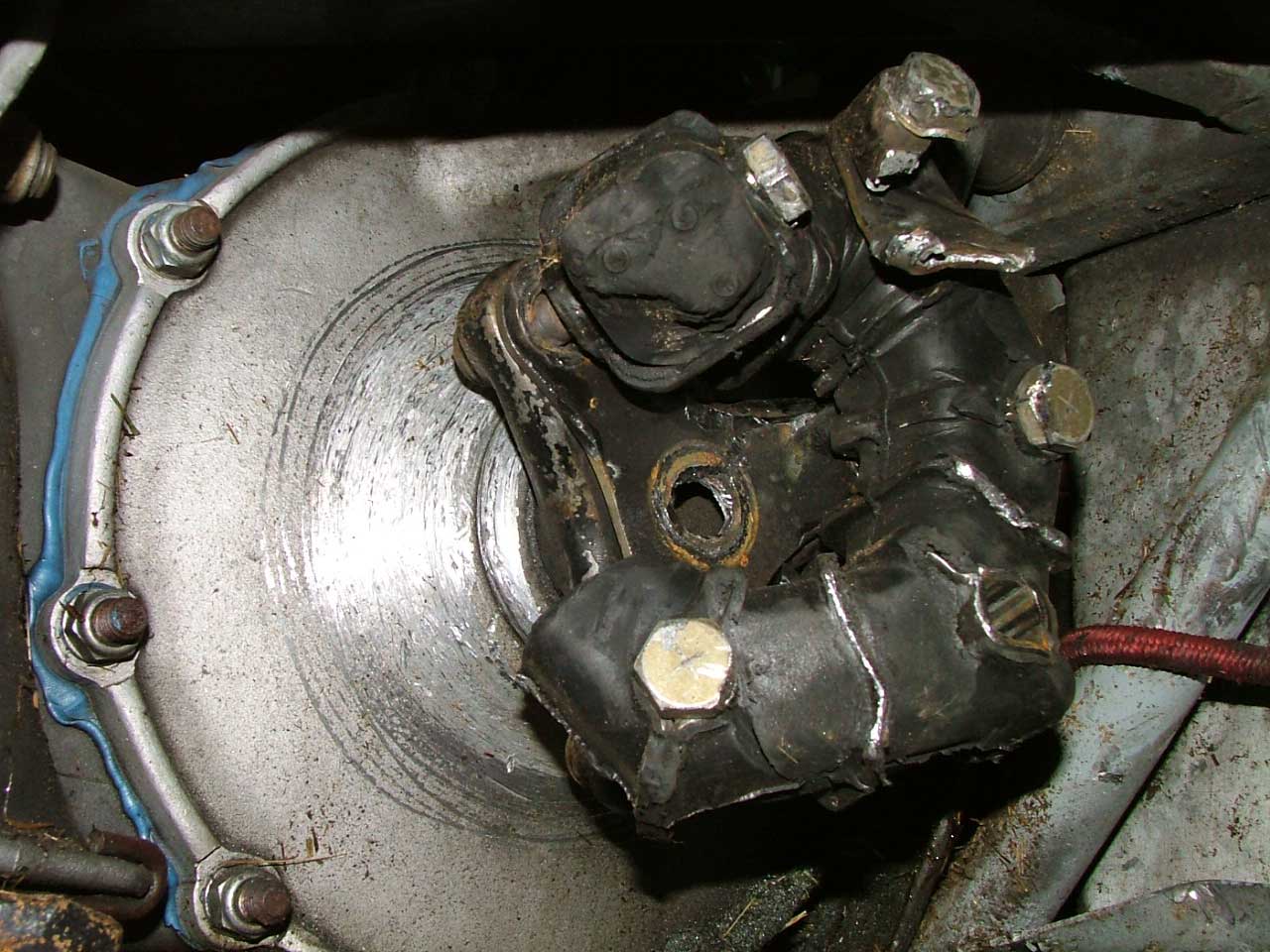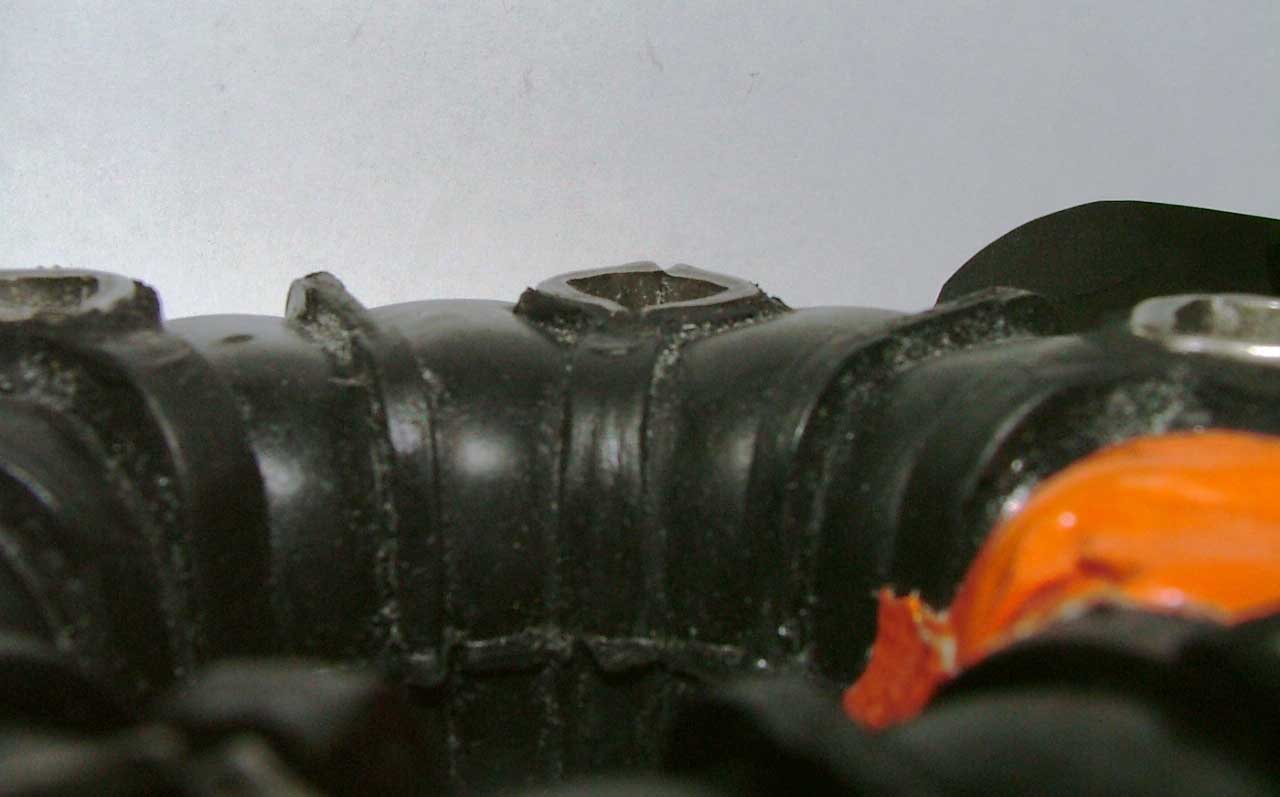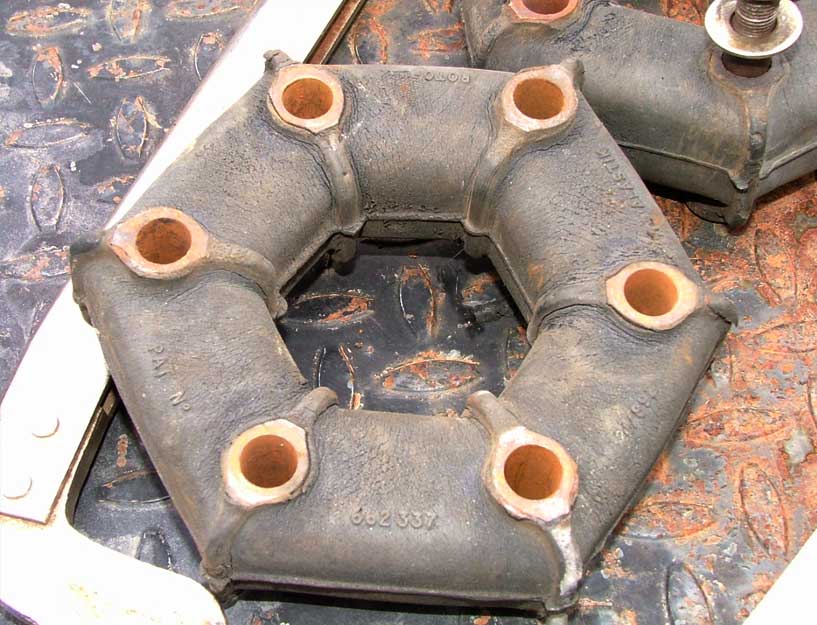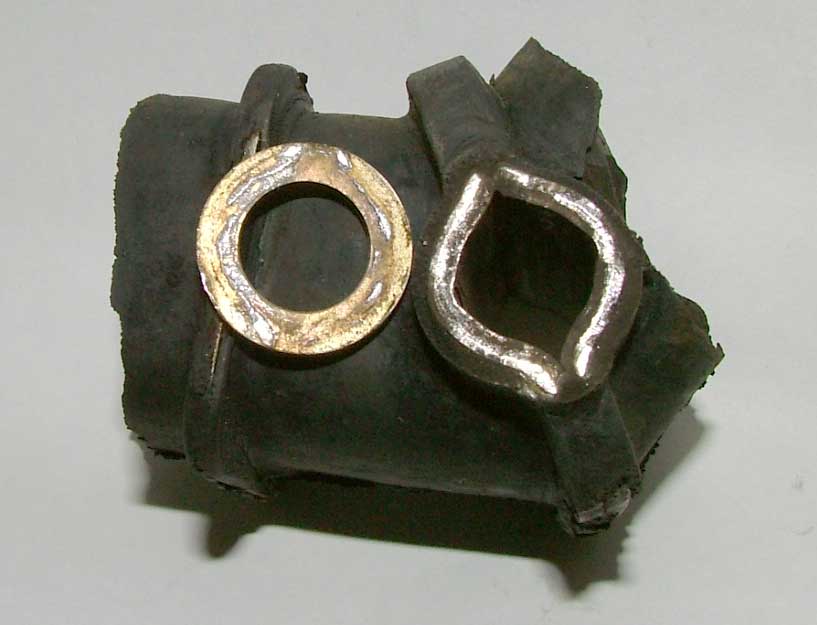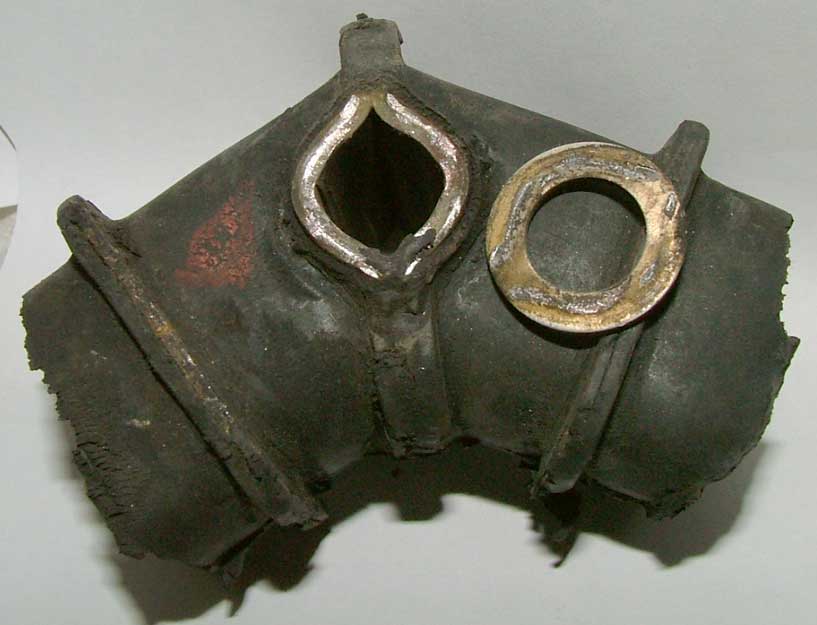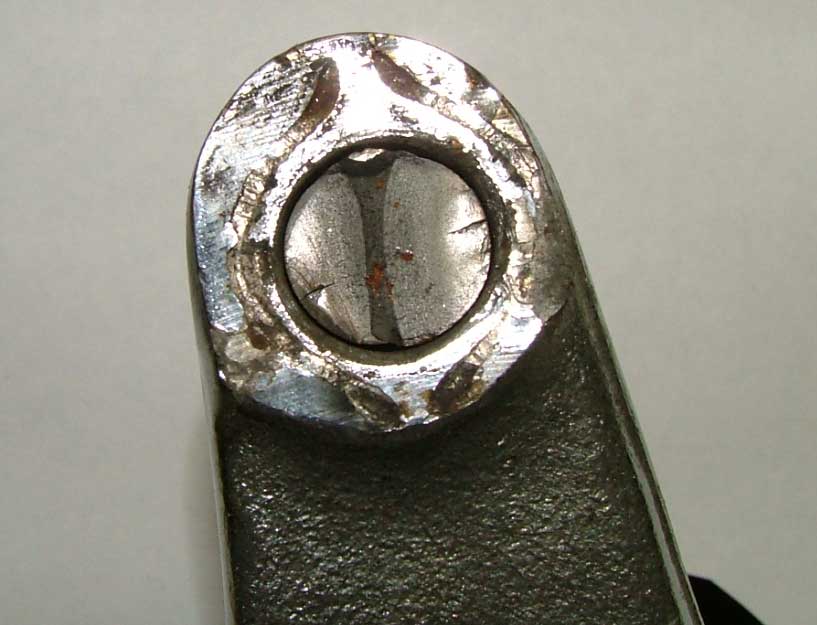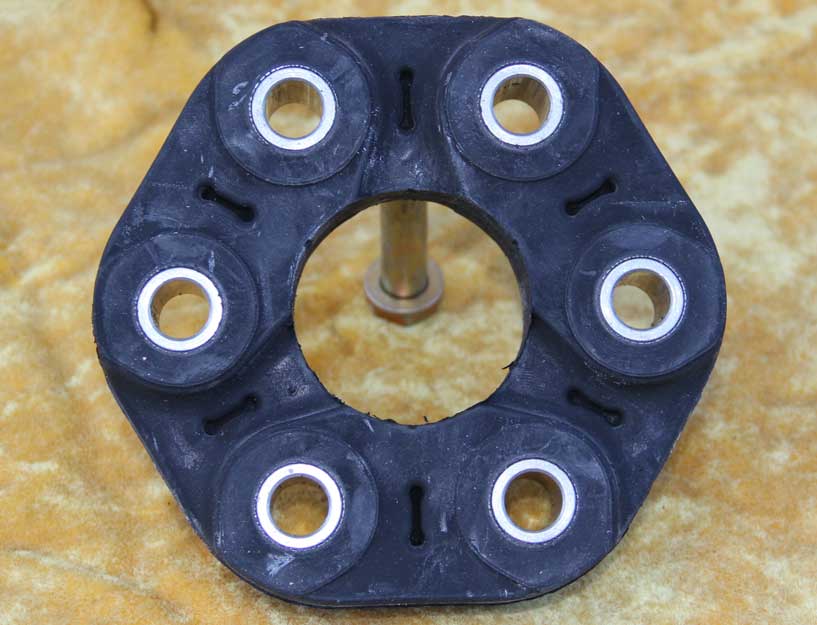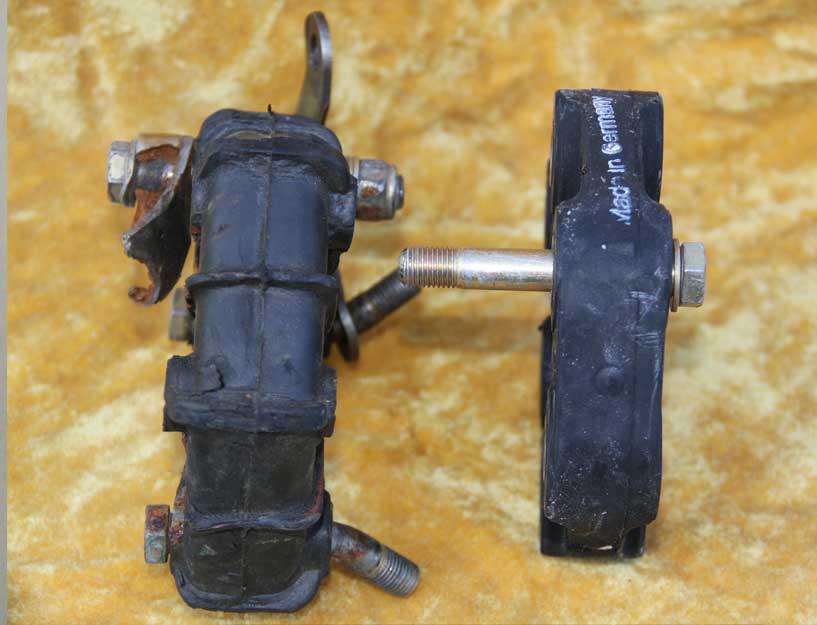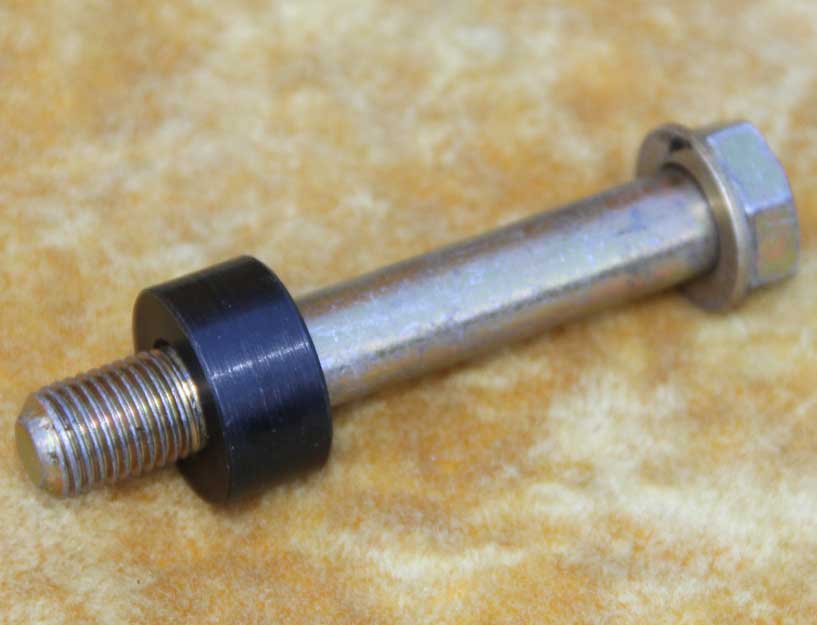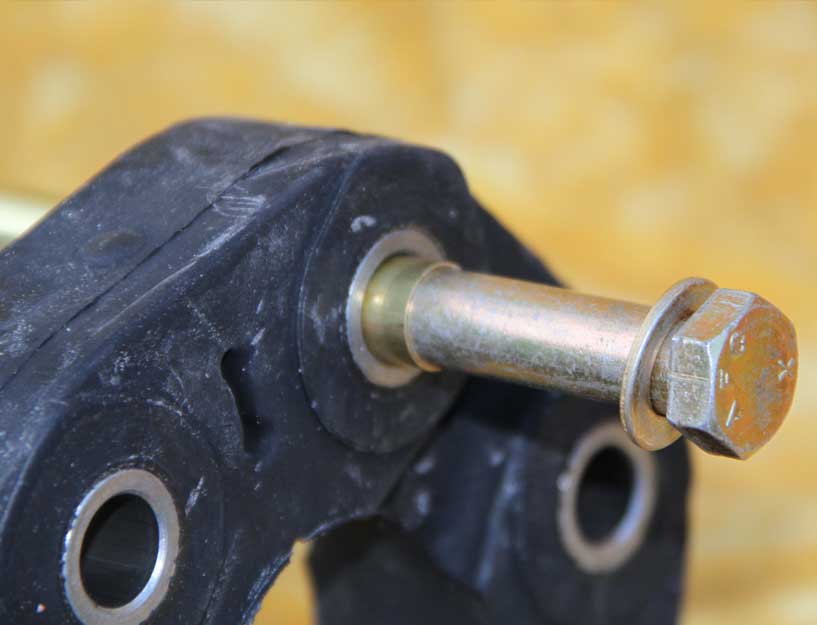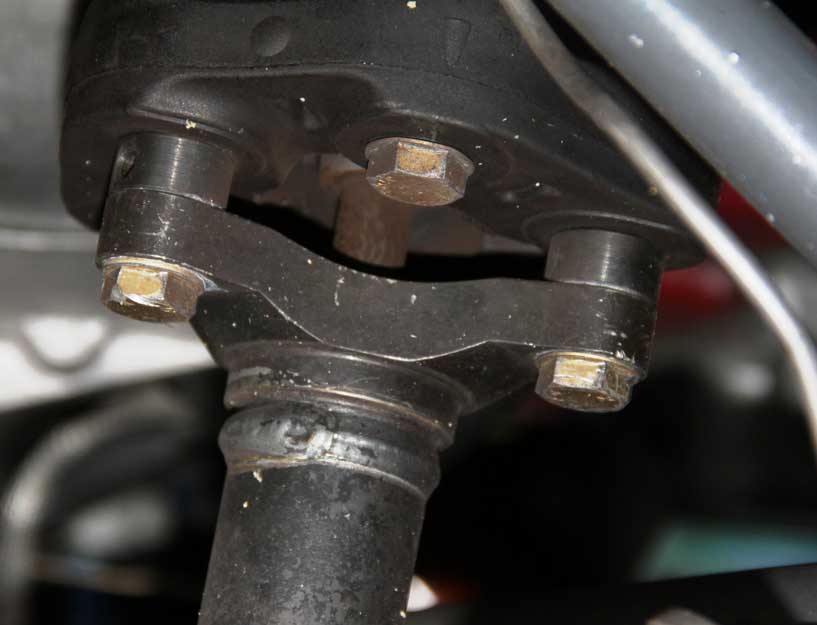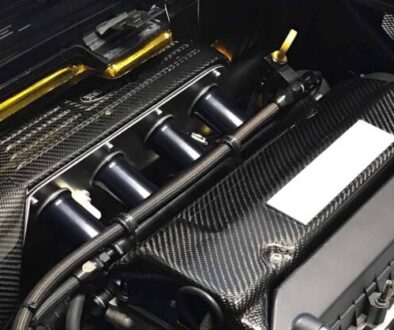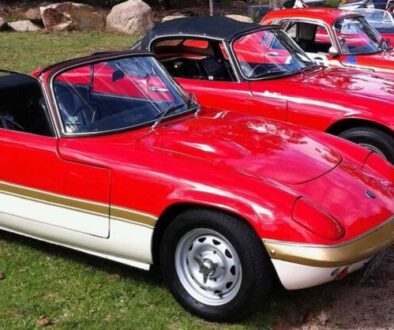Donut Drive Couplings
by John Mihalich, Jr.
As can be seen, the ‘donut savers’ saved nothing!
Anecdotal tales of terror regarding the disintegration of the donuts and the subsequent destruction of cars circulate through the beer-thirty paddock lore, and everyone knows someone who knew someone, who has/had a friend in England, that blew up a donut during one of those standing starts that the Brits are famous for, and all the damage that was done to that car.
The frightening part of this failure is that the donut failed on the fourth weekend from new! And as can be seen in photo at top, the ‘donut savers’ saved nothing!
Searching for answers, my friend and race mate, Jim Steinmetz, and I began looking closely at the donuts for possible reasons for these failures.
While looking over reinforced donuts that I had in the garage, we noted that the two piece leaves that make up the bolt holes in the donut did not make a ‘level’ or ‘flat’ surface to match up to the driveshaft weld star or Hewland stub axles.
Steiny also had two brand new donuts, sourced from Taylor Race Engineering at his shop. He pulled these out and with a Dremel Mototool and fine wire wheel, proceeded to remove the rubber off of the match surfaces of the leaf plates.
Next he measured the height, at six locations around the bolt hole using his Bridgeport milling machine. What Steiny discovered is that these two piece leaves typically DO NOT provide a flat surface for matching up to the stub axle or drive shaft. One of the donuts measured had a .036” variance high to low on one of the bolt holes. Other holes were closer to flat. Email if you want a copy of his entire survey.
Looking at an original Rotoflex coupling (above), you’ll see that the original donuts had a large machined surface that matched to the Hewland stub axle or driveshaft. In this style donut with the machined bolt surface and with a properly torqued bolt, the bolt would be operating in almost pure shear at the donut / Hewland stub axle (or driveshaft) match surface.
Depending on the exact leaf plate dimensions, two possible modes of failure were hypothesised due to dimensional inconsistencies:
1) The plates of the two leaves are in ‘shear’ across the spot welds that hold the two plates together.
2a) Induced Bending Moment – In certain dimensional configurations, it may be possible to induce a bending moment, into the coupling bolt, as the bolt is tightened to spec. Then in the course of normal use the forces applied to the bolt through driveline may exceed the bolt’s strength, either outright or through long term fatigue.
With enough bolt force and/or cyclic loading the spot welds could fail. This could explain the failure in the plates shown above. Unless, of course, the spot welds were just inadequate to begin with.
2b) Non-contact area – In certain dimensional configurations, it may be possible to have parts of the leaves not contacting portions of the stub axle or drive shaft finger, at all. This would allow the bolt to bend in that direction and set up for a fatigue failure.
During the post mortem examination of the drive system components from the 2007 failure a close and careful inspection of the contact points of the donut leaf faces was done.
This photo shows where an AN (hardened) washer was against the donut leaves with a lock nut over the washer. The photo clearly shows the contact patch of the leaves on the AN washer and the donut. As you can see, it is not a ‘full contact’ patch.
The contact patch of a second washer and donut leaves.
The third bolt of the driveshaft side was missing. However, there was a stub of the bolt still in the third finger of the driveshaft and looking at it closely, in the bright sunlight, evidence of a fatigue failure can be seen.
On the bolt, note the polished surfaces to the left and right, the grayish rough surface (just inboard) and finally the dark color in the center. The dark colored material, through the center, was the last to let go. You can also clearly see the non-uniform contact patch of the donut leaves on the weld star ear and how the leaves, with their sharp point dig into the ear.
What to do now?
Steiny immediately began facing the leaves in a milling machine to achieve a ‘flat’ matching surface. Getting the two sides of the donut leaves parallel did present a challenge. But failure to get both sides parallel would induce a bending moment and could result in premature failure. As Steinmetz points out, though, the spot weld quality would still be in question. However, Steiny has not experienced any donut issues with his faced donuts.
In 2003 we were racing with a Lotus 61 owner by the name of Bob Cope, who was also a Volvo mechanic, by trade. Bob noticed one day that the drive disks on a 740 turbo Volvo were the same size as a Metalastic coupling used on the Lotus 61. He needed a new set of drive donuts and after pricing Metalastic drive donuts at $160 each and Volvo drive discs at $33 each, he decided to try the Volvo drive discs. Additionally, the Volvo discs are for a 245 HP driveline.
The Formula Ford engines produce 110HP max driven through two donuts instead of one. Bob figured that these discs should be more than adequate.
These flex discs were common to both Volvo and BMW cars; BMW part #26 11 7 511 454, Volvo part # 1220843 and Febi-Bilstein part # 04435. Bob recommended staying with the Febi-Bilstein part over any off brand Far East suppliers.
The Volvo disc BCD (bolt center diameter) was 3.78”, same as the Metalastic donut, but was much thinner, 1 3/16” (30mm) versus 1 11/16” (46mm).
Spacers were needed to make up the distance between driveshaft and output stub axle. Additionally, the bolt holes are 12mm instead of 7/16”, so bushings are recommended to center the bolts in the discs. Some people are running without the bushings, but most feel the bushings are good practice.
I installed my first set of Volvo discs in 2008. Rather than cutting ‘custom’ spacers or using a stack of washers, I was able to source standard shaft collars; 7/16” ID by 7/16” thick. These are available from multiple industrial sources eg. Fastenal at very reasonable prices, about $1 each.
The bushes were cut to length using standard brass hobbyist tubing Ace Hardware, 7/16” ID by 15/32” OD.
The Volvo flex disc installed on my Lotus 61.
The flex discs have three thick sections and three thin sections between the bolt holes unlike the Metalastic couplings which have a uniform cross-section. Power is to be transmitted through the “thick” sections and in compression. Follow the instructions included the flex discs packaging.
Results
Since installing the first set of discs in 2008, I have experienced no catastrophic failures. One disc did go ‘out of round’ and produced a vibration in the rear end that prompted an inspection that identified the out of round disc prior to failure. I am aware of one other disc going out of round, but no reported failures. I believe that the chances of a catastrophic failure are diminished because the discs have Kevlar cord through them, which should help prevent them from coming completely apart. Vicious rumour has it that the original donuts on Bob Cope’s car are still in service, down in Texas.
Others have had similar positive results with the conversion. We have about 20 cars running with them now, at least that we know about. Truly the best part about the Volvo discs is the price; at $35 each, it is very cost effective to just replace them every year.
John Mihalich, Jr.
Lotus 61/FF/28
lffr@hotmail.com

